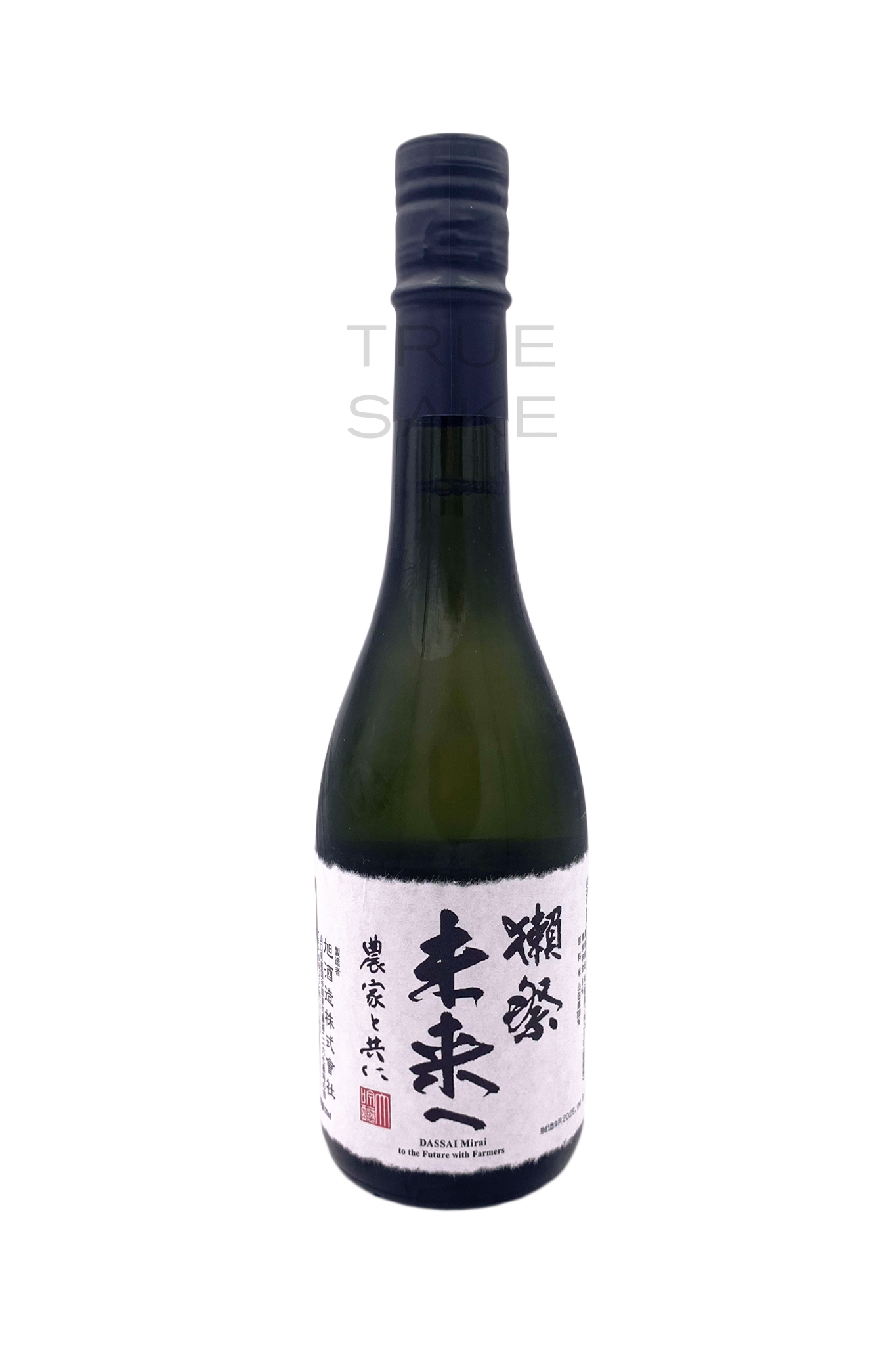
Dassai Togai – Milling The Unwanted Yamadanishiki to an 8% Masterpiece
Who doesn’t know the Dassai sake brand? Raise your hand. Hmmmmm, I don’t see any hands! That’s because this powerhouse sake brand is a world leader and for good reason. They make excellent sake. But the coolest thing about Dassai is that they keep testing themselves. They never relax and just make sake. In a word, Dassai could just coast and keep making superb sake, but that’s not in their DNA. They want more. They need more. They want to explore more, and they want to take sake further and further into the world, the future and the history of sake. And they do it like no other sake brewery in the business.
We all know that Dassai has taken this passion for learning to upstate New York, opening their first sake brewery outside of Japan. Dassai Blue is a new brand that is testing the limits of making formula sake with domestic ingredients not from Japan, and they are almost all the way there. We carry 4 different Dassai Blue including one that is entirely made of US sourced ingredients and the new Dassai Dry (which is the result of this brand reaching for new expressions). But that’s here in the US; never sleep on the brand from Yamaguchi that keeps looking for new ways to do sake.

Herewith is a section from the Dassai website that explains their most recent concept sake that is one for the ages! Why is it so cool? Because it’s made with rejected rice. Basically in every crop of Yamadanishiki brewing rice (the king of sake making rice) there is 10% that doesn’t make the grade for size and shape reasons. This portion of the crop is considered rejected and is sold for much less. Yes, the farmers lose about 10% right off the bat from great sake brewing rice that doesn’t look right or meet the standard. That hurts, and it has happened historically forever. But where there is a problem, Dassai sees not only a solution, but also an opportunity for not only the farmers, but for you, the sake drinker. Say hello to “Togai” rice, and say hello to the sake brand that never rests:
Not Wanting to Waste Even a Single Grain of Rice
Yamada-Nishiki is a sake rice that, even when grown with the utmost care by the best farmers, inevitably produces 5~10% of Togai (out-of-grade) rice. With tears, farmers have been selling Yamada-Nishiki Togai rice at low prices. Thus, the existence of Togai rice is a burden which bores down heavily upon farmers. We, DASSAI, are a sake brewery that strives in symbiotic relation with farmers. Therefore, dealing with Togai rice is a challenge which we cannot abandon. We have searched endlessly for a way to utilize Togai rice.
Finally, we have come to a decision. It takes tremendous effort, but the result is a luscious sake that can only be accomplished with Togai rice.
Togai rice Can be Polished Further
There are two main reasons why Togai rice cannot be graded. The first being “poor uniformity of the grains,” while the second reason is “low percentage of shinpaku (starchy core).”
One day, an idea defying common sense was conceived during our internal study session. “If shinpaku is absent, doesn’t that mean we can polish the rice at a higher ratio than ever before?” Shinpaku is the beauty of Yamada-Nishiki. On the other hand, it is also a double-edged sword, as the core will crumble when the grain is polished more than a certain extent.
So, we decided to try polishing the rice to the limit of the polishing machine. There is a mesh inside the rice polishing machine to sift out broken grains. When the size of the grain is less than 6%, it will fall through the mesh as rice bran. With that, we decided to set a margin and aim for an 8% polishing ratio. If we succeed in polishing the rice down to 8%, the poor uniformity of Togai rice will no longer pose a problem.
After going through great pains, the rice polishing staff successfully achieved the 8% polishing ratio with Togai rice. The resulting pure, white grains were very beautiful; only slightly larger than a grain of rock salt. The brewers in charge of koji were equally anxious as to whether this rice could be used as koji.
Although the saccharification strength was low, the 8% grains turned into excellent koji. Moreover, the sake produced carries a unique charm, thanks to the high polishing ratio.
In the past, we released a product called DASSAI Togai. We were confident in the taste of said sake, though unfortunately low-priced. I have bitter memories that the sake gained attention only because it was uncostly. As for DASSAI Future – with Farmers, we are proud to present this special sake that will satisfy those who truly understand the significance of using Togai rice.
The Man who Polished Rice to 8% Over the Course of 10 Days
Shoji Ide, who oversees rice polishing, recalls how he felt when he was told to polish Togai rice to 8%. “My first thought was, ‘What!? Can we really do it?’ However, this is totally new for me so I was anxious yet excited at the same time. When he actually started the work, Mr. Ide found himself in an unexpected situation. “When rice is polished to 8%, it becomes so light that the machine runs idle. This does not happen for the rice used in DASSAI 23, which is polished to 23%. Therefore, we gathered the rice polished by several polishing machines into a single machine and further polished it.”
“This step was very time-consuming. The whole process took 10 days, about 2.5 times longer than usual. I remember wondering how long it would take to finish polishing the rice.” Mr. Ide says that he was overjoyed when the rice polishing was complete after all the hard work. “Looking at the polished rice, I was extremely pleased to see that the polishing went well.
“Polishing Yamada-Nishiki to such heights was unheard of, therefore I felt a great sense of accomplishment. Recently, a trend of competing rice-polishing ratio is going around. I am not a fan, but as someone in charge of rice polishing, successfully polishing rice to 8% is a big boost of confidence for me.” DASSAI currently sources Yamada-Nishiki from 22 prefectures. Mr. Ide makes it his daily routine to observe and understand the nature of the rice, then polish it in a way that the rice will produce DASSAI’s distinct flavor, regardless of its origins. “Since I see so much rice every day, it delights me that the rice which farmers have spent so much time and effort to grow does not go to waste. Therefore, I take pride in our successful challenge.”
(Shoji IDE, Rice polishing team Born in 1977. Prior to joining DASSAI, he worked as a sales representative in the Kansai area. Since becoming a part of DASSAI, he has honed his skills in rice polishing).
How cool is that? And if you have never tasted a super premium ultra-milled sake before (other than the Dassai 23), then this is your “sort of affordable” way to try a sake that is made with Yamadanishiki in an entirely new expression. The body is as cool as this story, and the flavor is as cool as the brewery itself! Taste the future and welcome to sake history!
We wanted to issue a special Thank You to Dassai for selecting True Sake to be the first destination for this incredible sake story. We are very honored to bring this to you “First To Market.”

Dassai “Future With Farmers”
From Yamaguchi Prefecture. Special Sake. SMV: N/A Acidity: N/A
The nose on this “special sake” is a vivid collection of cantaloupe, green grape, pear, apricot, powdered sugar, strawberry, and rice bran aromas. In a word, this sake was made using rice that was graded out of production, which usually accounts for 10% of most Yamadanishiki yields. Is it bad rice? Nope, it’s just the rice that didn’t meet the size and shape requirements for top of the line sake-brewing rice. So, instead of wasting it they super polished this odd-shaped rice to 8% remaining. Holy Moly! Since this sake is a story, it’s totally appropriate that it drinks like a book with a gentle-off-sweet beginning, a beautiful smooth mouth-feel middle, and an elegant and whisper finish. It is velvety, soft, round, viscous, juicy, and very elegant with a density and complexity that drinks like a concentration or reduction in cooking terms. Look for blueberry, pear, red plum, lychee, peach, stewed apple, violet, tomato water, mochi, and grape flavors that show better in different sized glasses. Because of the rice “oddities” it cannot be classified as a Junmai Daiginjo, but it surely drinks like one with deep impact and emotions. WORD: Concentrated WINE: Fat Pinot Noir/White Burgundy BEER: Rich Fruity Ales FOODS: Sushi, sashimi, Champagne fare, and complex flavored cuisines.
